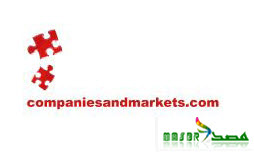 business & finance club - Saudi Arabia : But for the underdevelopment of the life segment, Saudi Arabia would be the most attractive prospect for international insurance companies that are looking to operate in the Gulf Co-operation Council (GCC) countries. Virtually all other trends are favourable. The market has been opened up to foreign competition. New laws are promoting the development of health insurance. Saudi Arabia's economy has withstood the downturn in energy prices through 2009 well.
Saudi Arabia's insurance sector differs from others in the Middle East in that it includes at least one indigenous insurer - Tawuniya - that would rank as a large insurance company in most countries. Figures released by Tawuniya to Tadawul, the local stock exchange on which it is listed, indicate that its premiums nearly doubled over the course of last year. By contrast, the next two largest players - Medgulf and Bupa Arabia (respectively a regional insurance company substantially owned by Saudi Arabian interests and the partly owned subsidiary of UK health insurance giant Bupa) lost ground. In this report, we provide a breakdown of the market shares of the various market participants. We also provide a breakdown of the insurance sector by line, from the point of view of the regulator or trade association. The Saudi Arabian market is dominated by health products, which is double the value of the next most popular insurance, motor. They account for around 40% and 20% of the insurance products marketplace, respectively.
Writing in March 2010, we have been able to ensure that the report includes actual data for 2008. We have generally been able to use data that has been published over the course of 2009 to adjust our forecasts for the year as a whole. We forecast total premiums in 2009 of SAR17,480mn. This is made up of non-life premiums of SAR16,784mn and life premiums of SAR696mn. In 2014 the corresponding figures are forecast at SAR42,968mn, SAR41,645mn and SAR1,323mn. In terms of the key drivers that underpin our forecasts, we forecast that non-life penetration will rise from 1.07% in 2009 to 1.71% in 2014, and life density from US$7.61 to US$12.97. Our Insurance Business Environment Rating for Saudi Arabia is 53.2 out of 100.
Issues To Watch
Islamic Finance
The problems of Dubai World and its affiliates in the UAE in late 2009 have overshadowed the longterm strengths of Islamic finance. The absolute size of the capital pools in Saudi Arabia mean that the country has very strong potential as a market for the issuance and distribution of sukuks. Some estimates suggest that contributions to takaful operators account for about one-fifth of the Saudi Arabian insurance market.
Regional Consolidation
There is, and has been for some time, limited cross border investment by insurance companies that are based in the Middle East. Medgulf and ARIG are examples of (re)insurers based within the region that operate very effectively across national borders within the GCC states (and slightly further afield). In Saudi Arabia (and all other Arab countries in the region), the vast majority of insurance companies are small by anything other than local standards and lack economies of scale. There is scope for consolidation.
Health Insurance
This line has emerged as a major - and growing - line in the non-life segment and should remain so
|